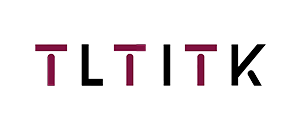Email format error
Email cannot be empty
Email already exists
6-20 characters(letters plus numbers only)
The password is inconsistent
Please enter the email address you’d like your password reset information sent to.
Email format error
Email cannot be empty
Email does not exist
Reset account password
For the account
6-20 characters(letters plus numbers only)
The password is inconsistent
Reset success
Your password was reset. You can log in using your new password.
Login

News
Here, you can describe a piece of text you want to express
Unlocking the Power of Interactive Teaching: Your FAQ Guide to School's Interactive Whiteboards and Teaching Integrated Machines
2025-10-09 11:10:41
As educational technology continues to evolve, many schools are integrating interactive whiteboards and teaching integrated machines into their classrooms. These tools enhance learning experiences, foster student engagement, and facilitate interactive teaching methods. However, with such advancements come questions and concerns from teachers, students, and parents alike. This FAQ article addresses common inquiries regarding the use of these innovative teaching tools, helping you navigate their functionalities and benefits.
Common Questions About Interactive Whiteboards and Teaching Integrated Machines
Question 1: What are interactive whiteboards and teaching integrated machines?
Answer 1: Interactive whiteboards (IWBs) are large display screens that connect to a computer and projector, allowing teachers to present lessons in a dynamic way. They enable touch interaction, allowing users to manipulate content directly on the screen. Teaching integrated machines, on the other hand, combine multiple educational tools into one device, often including a computer, projector, speakers, and interactive capabilities. Both tools aim to create an engaging learning environment that promotes collaboration and interaction among students.
Question 2: How can interactive whiteboards enhance student learning?
Answer 2: Interactive whiteboards enhance student learning by facilitating active participation and collaboration. Students can engage directly with the content, which helps to reinforce understanding and retention. The visual and interactive nature of IWBs caters to various learning styles, making lessons more accessible. Additionally, teachers can incorporate multimedia resources, such as videos and interactive quizzes, to create a richer educational experience.
Question 3: Are there any specific training requirements for teachers to use these tools effectively?
Answer 3: While there are no strict training requirements, it is highly recommended that teachers receive professional development to maximize the use of interactive whiteboards and teaching integrated machines. Many schools offer workshops or training sessions that cover the basic functionalities, as well as advanced features. Familiarity with the software and tools available can significantly enhance the teaching process and improve student engagement.
Question 4: Can interactive whiteboards be used for remote learning?
Answer 4: Yes, interactive whiteboards can be effectively utilized for remote learning. Many modern IWBs come equipped with software that supports online collaboration, allowing teachers to share their screen and interact with students in real-time, regardless of location. This capability is particularly beneficial during hybrid or fully remote learning scenarios, as it helps maintain an interactive classroom environment.
Question 5: What are some common technical issues that users might face with these devices?
Answer 5: Common technical issues with interactive whiteboards and teaching integrated machines may include connectivity problems, software glitches, or calibration issues. Users may experience difficulties in connecting their devices to the network or may find that the touch functionality is not responding correctly. Most schools have IT support available to troubleshoot these problems, and regular maintenance can help prevent many technical difficulties.
Question 6: How can parents support their children in using interactive whiteboards at school?
Answer 6: Parents can support their children by encouraging them to engage with the interactive features of their lessons. Discussing what they learned in class, asking about the tools used, and promoting a positive attitude towards technology can enhance their learning experience. Additionally, parents can familiarize themselves with the technology to better understand how it contributes to their child's education, fostering a supportive home learning environment.
Conclusion
Interactive whiteboards and teaching integrated machines are transforming the educational landscape, making learning more engaging and interactive. By addressing common questions and concerns, this FAQ aims to provide clarity and support for teachers, students, and parents alike. For further reading, consider exploring resources related to educational technology or attending workshops offered by your school. Should you have more questions, do not hesitate to reach out to your school’s IT department or educational technology coordinator for assistance.
Common Questions About Interactive Whiteboards and Teaching Integrated Machines
Question 1: What are interactive whiteboards and teaching integrated machines?
Answer 1: Interactive whiteboards (IWBs) are large display screens that connect to a computer and projector, allowing teachers to present lessons in a dynamic way. They enable touch interaction, allowing users to manipulate content directly on the screen. Teaching integrated machines, on the other hand, combine multiple educational tools into one device, often including a computer, projector, speakers, and interactive capabilities. Both tools aim to create an engaging learning environment that promotes collaboration and interaction among students.
Question 2: How can interactive whiteboards enhance student learning?
Answer 2: Interactive whiteboards enhance student learning by facilitating active participation and collaboration. Students can engage directly with the content, which helps to reinforce understanding and retention. The visual and interactive nature of IWBs caters to various learning styles, making lessons more accessible. Additionally, teachers can incorporate multimedia resources, such as videos and interactive quizzes, to create a richer educational experience.
Question 3: Are there any specific training requirements for teachers to use these tools effectively?
Answer 3: While there are no strict training requirements, it is highly recommended that teachers receive professional development to maximize the use of interactive whiteboards and teaching integrated machines. Many schools offer workshops or training sessions that cover the basic functionalities, as well as advanced features. Familiarity with the software and tools available can significantly enhance the teaching process and improve student engagement.
Question 4: Can interactive whiteboards be used for remote learning?
Answer 4: Yes, interactive whiteboards can be effectively utilized for remote learning. Many modern IWBs come equipped with software that supports online collaboration, allowing teachers to share their screen and interact with students in real-time, regardless of location. This capability is particularly beneficial during hybrid or fully remote learning scenarios, as it helps maintain an interactive classroom environment.
Question 5: What are some common technical issues that users might face with these devices?
Answer 5: Common technical issues with interactive whiteboards and teaching integrated machines may include connectivity problems, software glitches, or calibration issues. Users may experience difficulties in connecting their devices to the network or may find that the touch functionality is not responding correctly. Most schools have IT support available to troubleshoot these problems, and regular maintenance can help prevent many technical difficulties.
Question 6: How can parents support their children in using interactive whiteboards at school?
Answer 6: Parents can support their children by encouraging them to engage with the interactive features of their lessons. Discussing what they learned in class, asking about the tools used, and promoting a positive attitude towards technology can enhance their learning experience. Additionally, parents can familiarize themselves with the technology to better understand how it contributes to their child's education, fostering a supportive home learning environment.
Conclusion
Interactive whiteboards and teaching integrated machines are transforming the educational landscape, making learning more engaging and interactive. By addressing common questions and concerns, this FAQ aims to provide clarity and support for teachers, students, and parents alike. For further reading, consider exploring resources related to educational technology or attending workshops offered by your school. Should you have more questions, do not hesitate to reach out to your school’s IT department or educational technology coordinator for assistance.
Contact us

